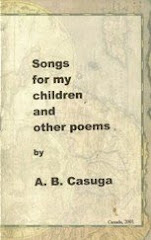This happenstance of an aposteriori picture validates the "imaging" energies of words and the universe of meaning they bring into the poetic line in particular and to the poem in general. Is it a "creative" drill? While it may not be as creative as proceeding with composition from the "given line" (idea, concept, theme, or experience as the germinating kernel of the creation) in the stimulating ideograph (picture, painting, drawing, articulated image), it could be a springboard for other mnemonic associations which could shape themselves into other poetic expressions or corollary images.
In the case of "Chairs," the woman on the chair --- who appears with what seems to this beholder a "lonely" repose --- would have been the "picture" conjured by all the words in the three excerpts, if it were vice versa. Picture first. Then reactions: words, images, structures, tropes, etcetera) But the picture came after the words, therefore, it was not the ekphrasis stimulus.
It could be a posterior "epiphany" or the issue of a "surprise (poetic) pregnancy" in the words of poet Jose Garcia Villa. It is the cart before the horse, as it were.
Now go figure what this is all about.
September 30, 2010 Re-view












No comments:
Post a Comment